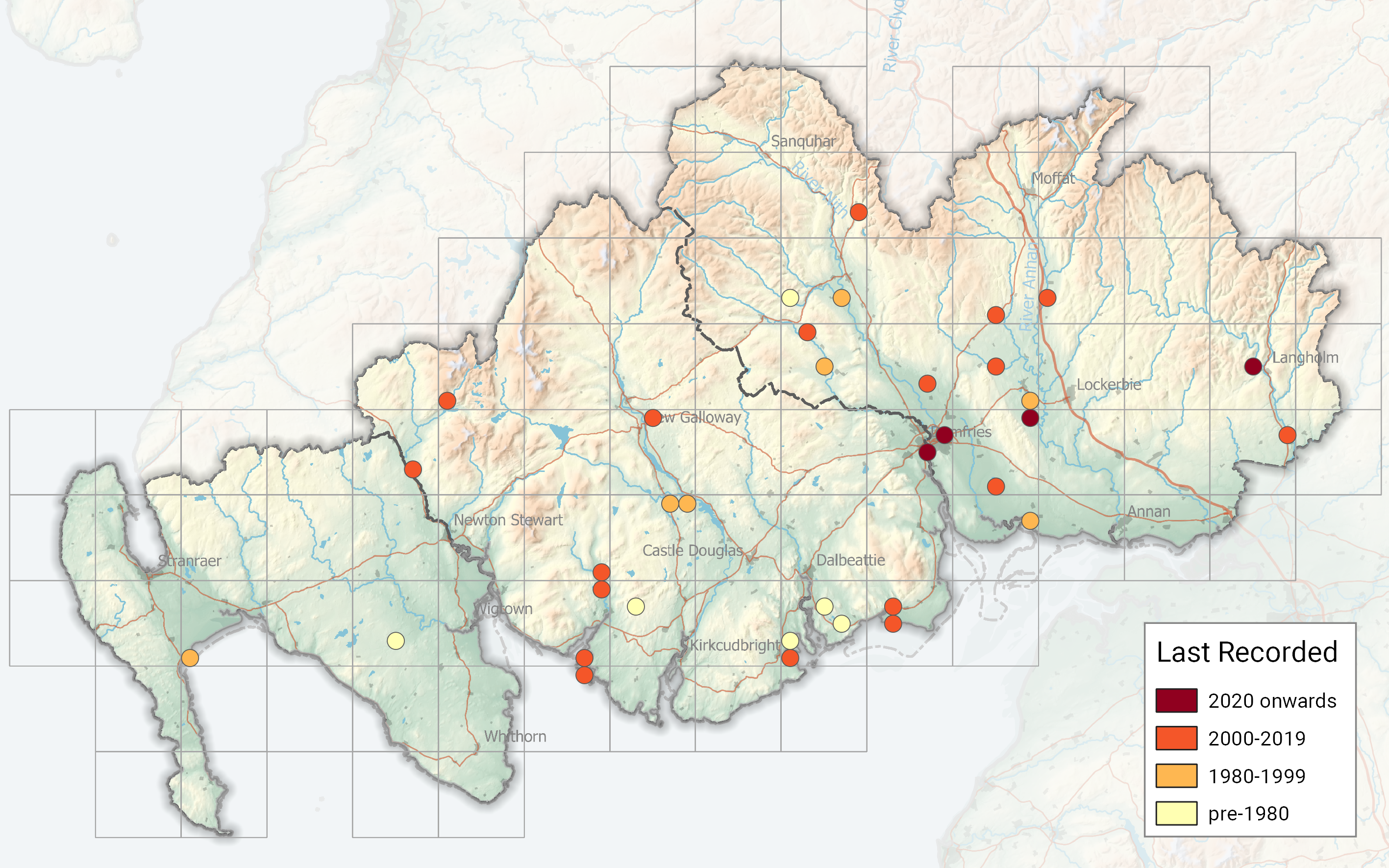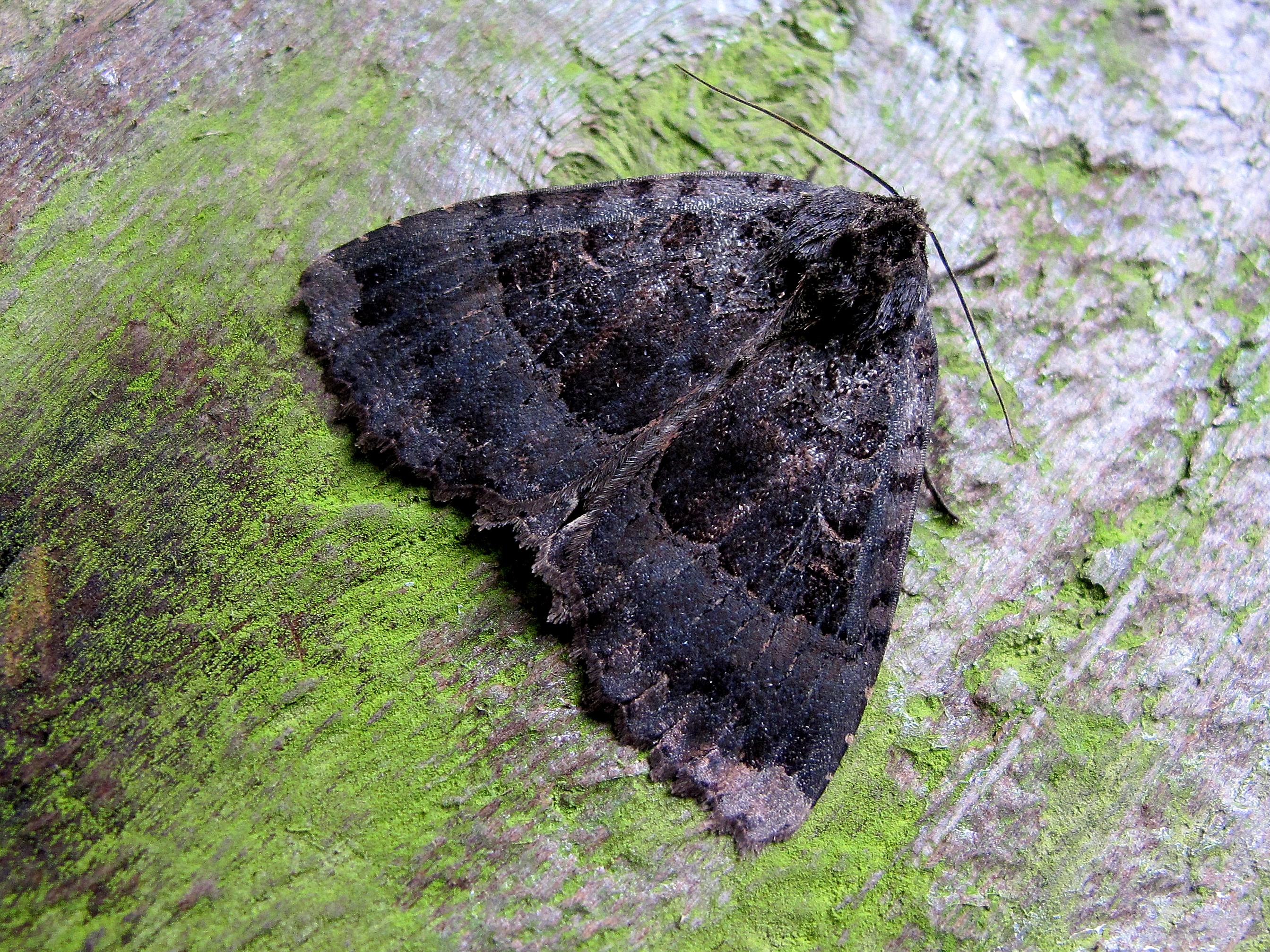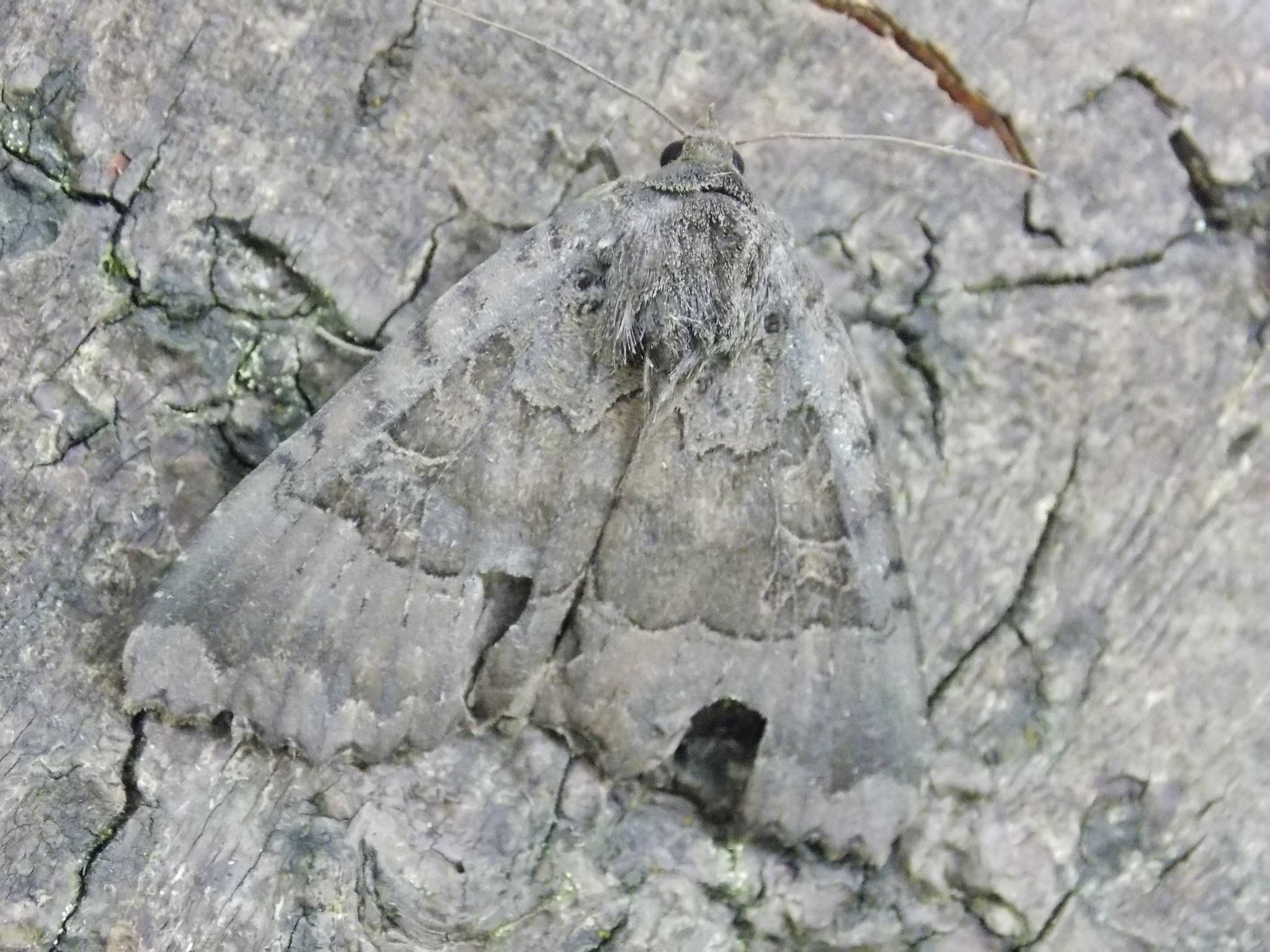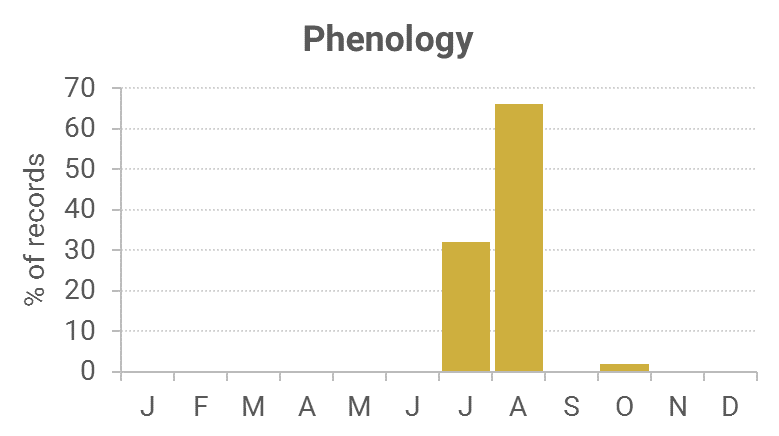Identification
Unmistakable.
Comes to light in small numbers but more likely to be attracted to sugar or wine ropes.
Recording Method.
Attracted to light in small numbers but comes to sugar in greater numbers.
Life cycle
One generation. Overwinters as a small larva during September to May, low down in the vegetation. Pupates in a cocoon.
Larval foodplants
Herbaceous plants like chickweeds and docks in the autumn, while in spring it likes woody plants like Hawthorn, spindles and birches.
Habitat
Hedgerows, gardens, marshes, woodland and riverbanks.
History
Gordon (1913) had found it common at sugar in the woods and on the moors around Corsemalzie, Wigtownshire.
Archibald Russell (1944) listed it as occurring near Gatehouse of Fleet (VC73) during the years 1942-43. Sir Arthur Duncan (1909-84) during May 1951 had found it at Tynron (VC72).
It was August 1978 before it appeared again, this time at Barnbarroch (BRC data). There were four records during the 1980s from all vice-counties: Waterside Mains at Keir (RIS data), two from the Hensol Estate and a single at Sandhead (VC74) by Bernard Skinner.
From 1992 to 2010 there were nearly thirty records, and apart from six in Kirkcudbrightshire, the rest were in Dumfriesshire, with many from Kirkton.





